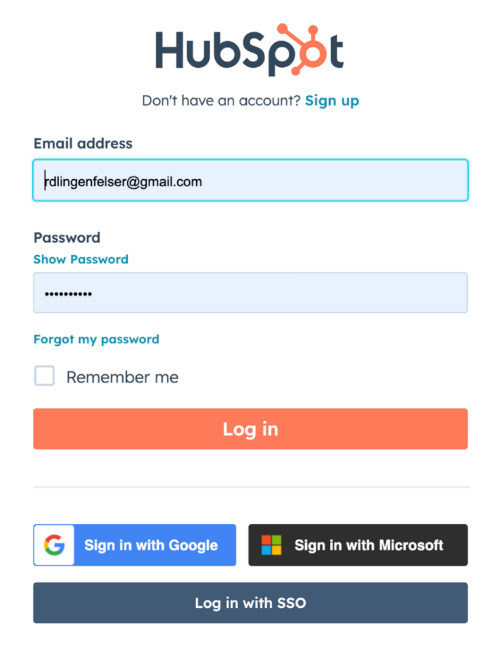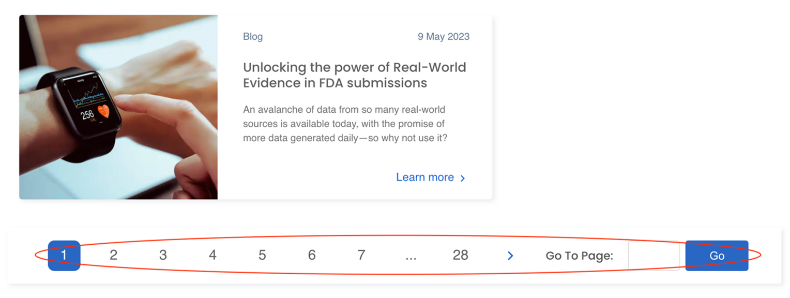Many B2B SaaS companies ignore SEO... and they are often right to do so!
For SMBs, especially startups, it rarely makes sense to prioritize SEO. Compared with marketing efforts on a grassroots scale and developing your product, SEO has too great an opportunity cost.
Unfortunately, midsize and enterprise-level SaaS companies will often ignore SEO as well. And that is the biggest mistake.
Though it may seem mysterious or unproven, the potential of organic search can be easily demonstrated through both internal analytics and basic keyword research.
Once you commit to improving SEO, though, what mistakes must you avoid?
SaaS benefits from applying the basics, just as most any other company would. However, most articles on the subject merely highlight general SEO principles they have all copied from one another.
Instead, the issues described in this article are specific to B2B SaaS. The information is drawn from my decade-plus experience helping businesses in the industry.
The following are the Top 7 SEO mistakes that B2B SaaS firms make.
1. No link exists to the marketing site from login pages
Normally, you'll have a subdomain that customers use to enter your platform (e.g., app.hubspot.com/login). It may be customized for the client, but the same design is used as for the generic login page, perhaps with the logo included.

Other sites will often link to your login pages. However, search engines analyze your subdomains separately from your primary marketing site (in this example, www.hubspot.com). The authority you earn from those login links doesn't automatically spread to your pages that need it, failing to benefit keyword rankings.
The context for a link can be simple, such as, "Want to learn more about *brief product description*? Visit companyname.com." The anchor text is the display URL, which points back to your homepage. You don't need to get cute with nonbranded keywords here, which just looks spammy.
Finally, ensure that your login pages are indexable. Doing so is useful, for clients anyway, because many will search for them on Google instead of accessing a bookmark.
Although this blunder is most conspicuous on login pages, the concept applies to every subdomain: Those you created for support documentation, customer education, forums, and so on should all link to your primary marketing site.
2. Sensitive client data shows up in search results
Many Web-based versions of apps house client data under a unique subdomain (e.g., data.companyname.com).
Be certain those pages aren't indexed!
In the worst cases I've found, form fields could be changed due to a lack of password protection on those pages.
Here's a process I wrote about that you can follow to remove these pages from Google's index.
Even if it's not a legal issue, exposing your company's clients in search results could harm a key relationship, potentially revealing a competitive differentiator or a vulnerability.
3. Case studies target companies, not industries, in search results
Prospects don't seek out results for individual companies, however significant those companies may be. Instead, they want to view success by type of need and industry.

So, in the example above, you should target "electronic data capture medical device case study" instead of "ZEISS case study." You can also create a general category page that links to several branded case studies instead.
If you've helped a major brand thrive, you should emphasize that—but don't target just that brand in search results.
4. Key third-party listings aren't optimized for SEO
Many SaaS companies do engage in basic on-page SEO within their own site. However, most then fail to consider keywords on key profiles, such as those on Capterra.
Optimizing those texts helps you to rank within those vertical search engines. It also lets you provide relevant context for your own keyword rankings when you link back to your own site (as explained in this Google patent).
Finally, this type of optimization will matter even more as Google's Search Generative Experience (SGE) takes over, which relies on such sources to provide summaries for your company.
5. The site uses 'Load More' JavaScript buttons on Resource and Blog sections
What happens, on many sites, is that pages initially get crawled then indexed from the Blog or Resource homepage.
Prior content inevitably falls off that page as new content is published. Many blog and resource hubs then rely on a JavaScript button to load more pages. Google usually does not interact with those buttons, so you lose those internal links.
The older pages remain indexed since they are in your XML sitemap, but the result is still a large decrease in keyword rankings for your past content. If you don't consider a piece of content important on your own site, why should Google?
The best solution is to use pagination-based HTML links on the blog homepage. If doing so isn't possible, you can boost internal linking between and among important articles.

6. You don't properly scale your backlink 'engine'
It's neither efficient nor effective to hire an offshore agency to manually generate backlinks. At best it has no effect; at worst, you get penalized in search results once Google realizes you are artificially linkbuilding.
The best source of backlinks is always your SaaS product itself. But you can't be totally hands-off. I once had a client that received quite a few backlinks from PubMed, but it had no standardized process to guide its research partners in how those citations were created (if they even were).
Ensure you use your backlink "engine" for the greatest number and most ideally constructed backlinks. That can be done simply by providing guidelines for where to link, proper keyword-based context, which pages, etc. (It doesn't need to feel manipulative.)
7. SEO best-practices aren't considered in the content strategy
The typical B2B SaaS content strategy has many and varied problems:
- Content is not specific enough on pages when attempting to build topical authority.
- Product teams encourage being too general and using branded product names in vital on-page SEO elements.
- Headlines focus on copywriting while failing to incorporate keywords.
- Internal linking to a page doesn't occur despite referencing a topic repeatedly throughout the content.
- Keyword cannibalization occurs by addressing the same topic over and over again without longtail keyword variations.
- A site redesign/migration fails to consider SEO, often losing relevancy for important keyword rankings that were earned.
- Mobile-first indexing isn't considered.
- Outdated content isn't redirected or deleted.
- Search intent is misaddressed—for example, by writing blog posts instead of providing tools or templates the audience truly wants.
- Content is syndicated to partners without a proper canonical tag and reference to the original content.
- Content lacks expertise.
And many others.
Go beyond avoiding SEO mistakes in B2B SaaS
SEO does require more time to improve compared with other channels, nor is it cheap to create great assets. However, the rewards are great when SEO is pursued effectively.
Partnering with an agency or consultant allows your company to benefit from deep knowledge of how search engines work so that you can grow organic search as a matter of course—through everything you already do that's good for marketing—but made even better.
This article was meant to be specific enough so that you can start making positive corrections for better SEO today. However, it should be clear the effort goes beyond what's listed here. There are plenty of issues to be dealt with even just when addressing content strategy, as we've seen!
So fix these seven major SEO mistakes. But if you want a true strategy as a B2B SaaS company of sufficient size, partner with experts for a complete SEO approach.
More Resources on B2B SEO
How to Get SEO Right for Your SaaS Business: Three Strategic Elements
Unraveling SEO Secrets for B2B Marketers: Kyle Roof on Marketing Smarts [Podcast]
SEO for B2B Marketing: Keywords, Content, and Clicks




